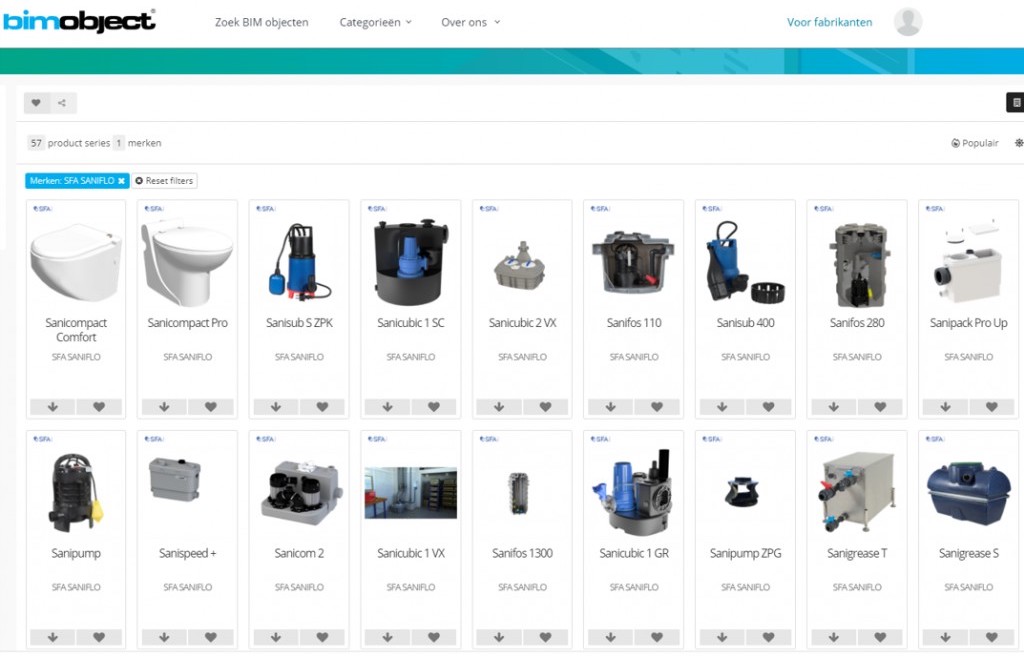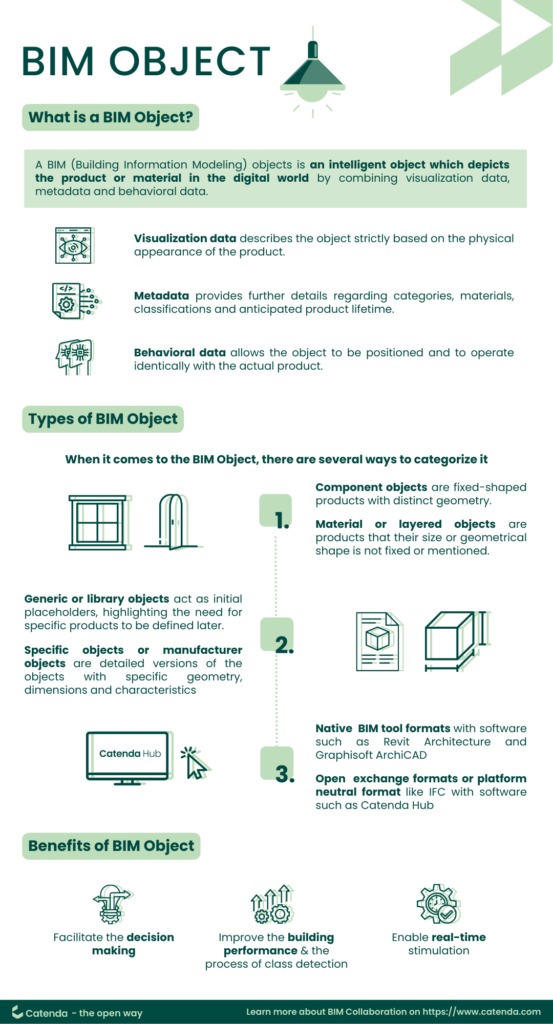What is a BIM Object?
A BIM (Building Information Modeling) object is an intelligent object which depicts the product or material in the digital world by combining visualization data, metadata and behavioral data.
- Visualization data describes the object strictly based on the physical appearance of the product.
- Metadata provides further details regarding categories, materials, classifications and anticipated product lifetime.
- Behavioral data allows the object to be positioned and to operate identically with the actual product.

What are different types of BIM Object?
When it comes to the BIM object, there are several ways to categorise it.
The most common approach is dividing the object into component and material
- Component objects are products that have distinct geometry and fixed shapes such as furniture, windows and doors.
- Material or layered objects are products that their size or geometrical shape is not fixed or mentioned such as floors and walls.
The BIM object is also considered as generic or specific
- Generic objects or library objects act as the placeholders during the initial design phase to underline the need for particular products that will be defined at a later stage.
- Specific objects or manufacturer objects are detailed versions of the objects with specific geometry, dimensions and characteristics.
Moreover, the BIM object can be classified based on its format file
- Native BIM tool formats with software such as Revit Architecture and Graphisoft ArchiCAD.
- Open exchange formats or platform neutral format like IFC with software such as Bimsync.
Benefits of BIM Object in BIM Projects
The combination of product visualization and a wide range of data in each and every object can give BIM projects a lot of advantages.
- Facilitate the decision making: Gaining market intelligence from the data and being able to easily and flexibly interact with different virtual objects helps designers anticipate various situations that can happen in actual buildings and then arrive at a deliberate decision regarding design and materials.
- Enable real-time stimulation: Thanks to the real-time constant updates, any information or changes can be communicated and reviewed timely across the project team and related individuals.
- Improve the building performance and the process of clash detection: The whole project elaborated with many specific digital objects allows the managers to spot any points of potential clash to avoid or minimize the risk on the construction site.
Industry standards of BIM Objects
As for the BIM Object, it is witnessed that there are a lot of existing and in-progress standardization initiatives. Above all, the current trend highlights 2 main focused groups with different behaviors. Meanwhile some replace former CAD standards, others express an interest in naming conventions of objects and properties as well as other open formats.
In line with two categories, BIM project platforms (Building Information Modeling) are building their own system of standards and making it become aligned with the others widely used in the industry. However, all of them are not united under one common cross-industry standardization. The lack of general frameworks not only leads to the overlaps and inconsistencies with other standards but also makes it difficult for users and manufacturers to develop their specific approach.
How to make/create BIM objects?
BIM objects can be created with a basic document such as a 2D drawing on paper or digitally, or sometimes by scanning a real object into a digital representation.
After that, technical information from product data sheets, including materials and textures, is added to make the object useful in BIM software. This process might also include adjusting the technical details so that the file works well in BIM software.
Recommended platform, online store and BIM Object library – Where you can find 3D BIM components such as furniture, doors, windows, lighting products, or plants
Here is a list of websites and platforms for BIM objects.
